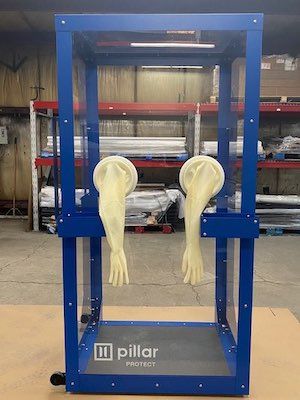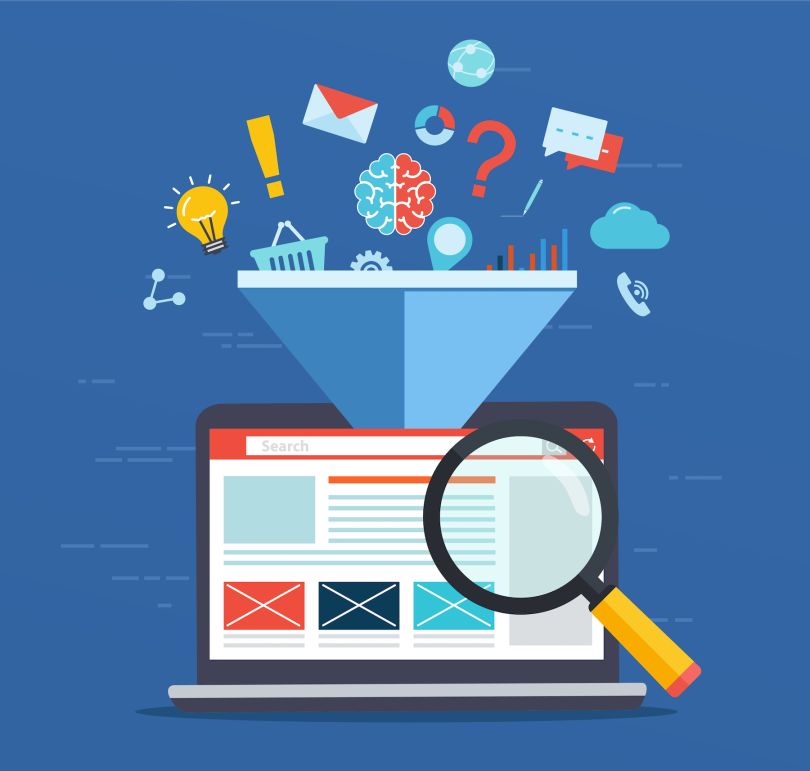When Ryan Leavitt co-founded the startup Pillar Booth last year, he thought he knew what he was getting into.
He had a clear-cut product in the office phone booth, and a tried-and-true B2B sales strategy honed over years of co-founding tech startups, like the recently acquired SaaS company LearnCore. For a time, everything was going according to plan, and his company was prepared to grow.
Then the novel coronavirus made an appearance.

With the market for office phone booths on indefinite hold, Leavitt saw a new way to leverage his company’s product. Hospitals were struggling with a shortage of personal protective equipment, and his company’s phone booth could help fill the gap.
With a few tweaks to its product and a partnership with Chicago-based manufacturing firm Morgan Li, Leavitt turned his company’s signature phone booth into a coronavirus testing booth. Then he just had to figure out how to sell it.
“I’ve sold to a lot of industries, but I have no experience selling to hospitals or the government,” Leavitt said. “So we needed to figure out a strategy to get in front of as many people as fast as we possibly can and figure out what works.”
Here’s how he built a sales strategy from scratch and scaled it within a few weeks.
Building a Sales Strategy From Scratch
- Find target customers through outreach
- Test outbound messaging across the industry
- Narrow your customer base and then narrow it again
- Scale the strategy and expand to more locations

Finding the Target Customer Through Outreach
Leavitt knew two things as he set out to sell Pillar Booth’s new product: he knew there was demand for the product and that his market would be the medical industry.
What he didn’t know was who the buyer would be. The medical industry is vast and notoriously complex, with large hospital systems, smaller hospital systems, privately funded organizations and publicly funded ones — each with different buying processes and needs. To figure out who his target consumer would be, Leavitt just started selling.
“You’re just trying to earn the right to get them on the phone and show them you understand their organization and their pain points.”
He sent cold outreach to every type of hospital system and medical center to see who would respond. He kept the messages short and to the point, focusing on the shortage of testing equipment and the solution Pillar Booth could provide. Simultaneously, he connected with a medical equipment platform to generate warm leads, and deployed a PR campaign to get the product in front of potential customers.
“They’re busy, they don’t have a lot of time to read long emails,” Leavitt said. “You’re just trying to earn the right to get them on the phone and show them you understand their organization and their pain points.”
Spreading his outbound out at the start allowed him to determine what messaging resonated with customers and discover who was actually in a position to buy the product. He learned that large hospital systems were interested but didn’t have a process in place to actually buy it due to their labyrinthine infrastructure. Even when he tried to donate the equipment, they didn’t have a clear process on how to proceed, he said. So, he crossed them off the list. It was the same with the government as well.
Smaller, federally qualified health centers, meanwhile, had demand for the product and a simpler, though still lengthy, purchasing process. With more than 14,000 centers spread across the country in need of testing equipment, Leavitt had found his target customer.
Narrowing the Customer Base and Scaling the Strategy
With a target customer in mind, Leavitt transitioned to figuring out how to scale his sales strategy.
After testing five different outbound messages, he narrowed it down to two templates tailored to federally qualified health centers. One version included a more formal introduction and a sentence indicating that if the center was conducting tests, Pillar Booth’s product could help. He then included a picture of the product and five common use cases. The other version used a more informal tone, highlighting the stress testing can place on the center and introducing the company and the modular testing booth.
“So we know how to resonate with these centers, we know how to get to them, and we have a good product that’s solving a problem, but we don’t really know who needs it today,” Leavitt said. “The whole process is about testing.”
The next phase in his test involved narrowing the scope even further. Since Pillar Booth doesn’t have a sales team, Leavitt hired a few outsourced sales reps to help reach customers. They then took a state-by-state approach. Through trial and error during its first state, Ohio, they learned that most health centers in large cities had more access to PPE resources and didn’t need Pillar Booth’s product. So, they eliminated any centers in Cincinnati, Cleveland and Columbus, and focused on those in rural areas instead.
Through constant tinkering and experimentation, his team has figured out its customer base and is planning to expand to more states. The key throughout it all has been in making it a scientific process, Leavitt said.
“The more we can make it a data-driven process, the more successful we’re going to continue to be, and we can continue to replicate it,” Leavitt said.

Keeping in Touch With Offices
While Leavitt’s focus has been on testing booths, the company hasn’t stopped producing office phone booths. This is not a company pivot, he’s quick to clarify — rather he sees the booths as two separate products.
“You get to have real conversations and understand what people are thinking and see how you can be helpful.”
While offices are on hold, Pillar Booth has worked on updating its phone booth to make it easier to disinfect and safer for the current environment. Meanwhile, Leavitt has continued to have calls with customers that are focused more on consultation than on selling. Those conversations have helped him build relationships and to figure out what future offices will look like.
“I like to pick up the phone,” Leavitt said. “You get to have real conversations and understand what people are thinking and see how you can be helpful. I’m not trying to sell them a phone booth; they’re not in the office. So until there is a need, I just try to figure out how I can provide value in other ways.”
While he never anticipated getting involved in selling medical equipment, the experience has taught him a few new things about how to scale a new product.
“I’ve never been in a market that is so highly targeted and transactional as it is with testing booths,” Leavitt said. “I love the discipline of sales and the science of sales. This is the fastest we’ve ever been able to iterate and make changes because of the sheer volume of fits.”




